With its jaw-dropping natural beauty, charming coastal towns, and historic destinations inland, Croatia deserves a top spot on any Europe bucket list.
With so many gorgeous places to visit in Croatia, you’ll be planning your next visit to the country even as you fly home.
The best places to visit in Croatia are diverse. From national parks featuring enchanting waterfalls to jewel-green islands nestled in turquoise waters and from coastal towns sporting pristine beaches to cities with rich histories and culture, you’ll be spoiled for choice on where to go in Croatia.
A road trip through Croatia is one of the best ways to spend 10 days in Europe. And if you have more time, all the better: you can delve into the charms of lesser-visited national parks, smaller towns, and more far-flung islands.
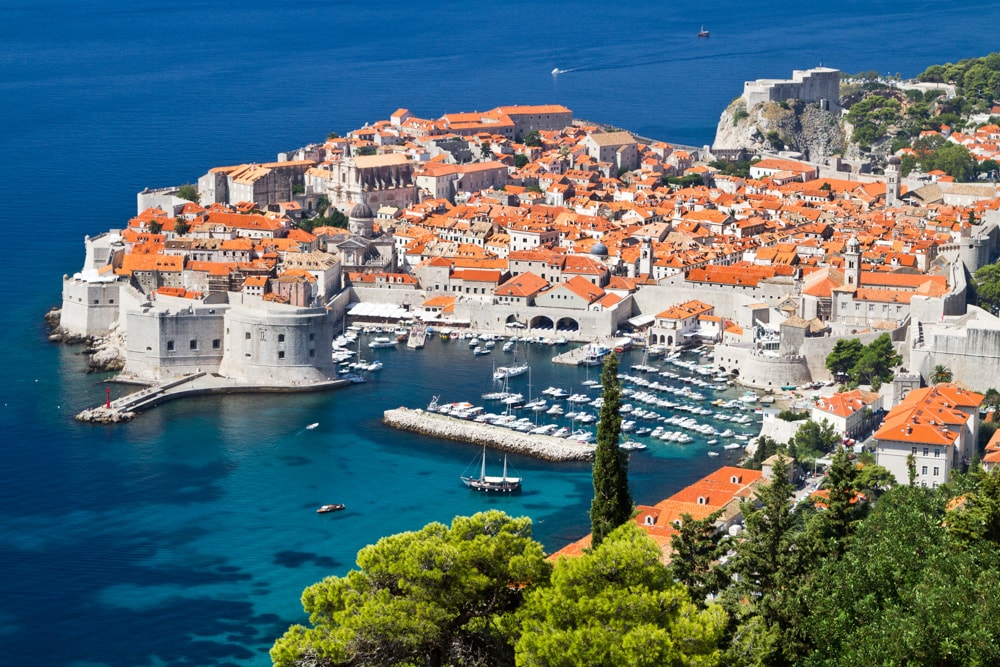
Some links on this page may be affiliate links. If you click an affiliate link and make a purchase, we may receive a small commission, at no extra cost to you. For more details, refer to our disclosure.
Croatia’s Dalmatian Coast is at the top of most visitors’ wish-lists for the country. Deservedly so, because it includes such pearls as Dubrovnik and Hvar Island, and the beautiful beaches that make Croatia a super popular summer getaway.
But also plan on visiting the charming villages of Green Istria, the beautiful Istrian Coast, and the interior, which includes the capital city of Zagreb and the magical Plitvice Lakes National Park.
Read to get started? Let’s discover the best places to visit in Croatia: the destinations that definitely deserve a place on your itinerary for this must-visit European country!
TABLE OF CONTENTS
Bucket-List Croatia Destinations: The Top 3 Places to Visit in Croatia
Best Places to Visit in Croatia: Dalmatia
Where to Go in Croatia: Istria
Places to Visit in Croatia: Inland
Map of Best Places to Visit in Croatia
The Top 3 Places to Visit in Croatia
Plitvice Lakes National Park
A bucket-list destination for most travelers to Croatia, Plitvice Lakes National Park is one of the best national parks to visit in Europe. The park is known for its drop-dead gorgeous scenery featuring lakes and waterfalls.
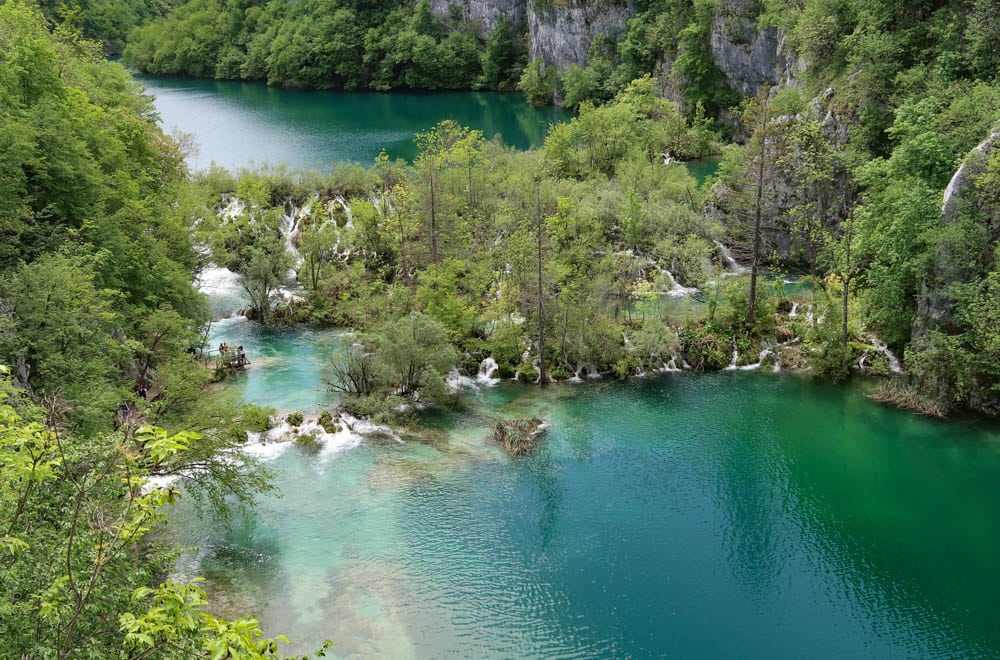
The most-visited of Croatia’s national parks, Plitvice Lakes National Park is located in inland Croatia, and it makes for one of the most popular day trips from Zagreb or Zadar.
But it is worth spending at least one night near the park so you have more time to enjoy the astounding natural beauty of Plitvice Lakes.
A natural network of sixteen lakes, interconnected by cascades big and small, Plitvice Lakes National Park features boardwalk and sidewalk trails that allow you to get up close to the lakes, waterfalls, and flora in the park.
Veliki Slap is the largest and tallest waterfall in the park, and it is very impressive. Many scenic overlooks allow you to appreciate the otherworldly beauty of the landscape, with the aqua-colored lakes and multitudes of cascades.
Your entry ticket is also good for a scenic boat ride on Kozjak Lake, the lowest lake in the Upper Lakes of Plitvice Lakes National Park. The boat ride allows you to conveniently transition from the Lower Lakes to the Upper Lakes.
Spring and fall are the best times to visit Plitvice Lakes National Park. Summer also has great weather, but the park tends to be the most crowded in the summer months.
Winter is low season, but you may see frozen waterfalls and a magical snowy landscape if you visit then.
Dubrovnik
One of the top cities to visit in Europe, Dubrovnik is a must on your Croatia itinerary.
Dubrovnik has a beautiful Old Town made for wandering, and many activities to do on land and in and on the water. It is located at the southern end of the Dalmatian Coast.
Our 2 days in Dubrovnik itinerary is the perfect introduction to “the Pearl of the Adriatic.”
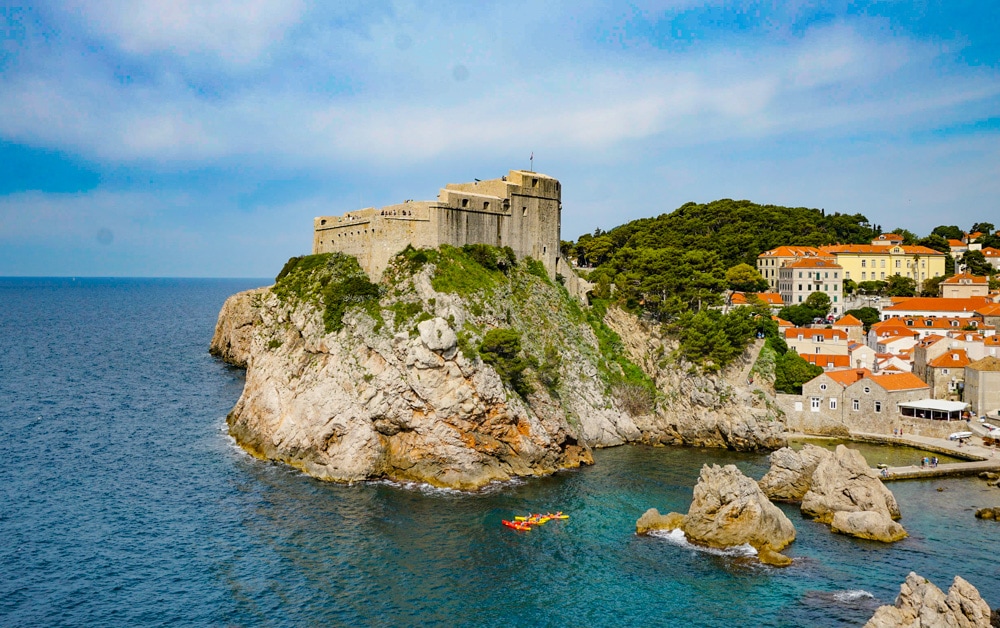
Walking the walls of the Old Town is arguably the most popular activity in Dubrovnik, especially if you’re visiting when the weather is clear and bright. The walls offer stunning views over the orange rooftops of the town, and over the Adriatic Sea.
Take the cable car, or drive up to the summit of Mount Srd for magnificent aerial views of Old Town Dubrovnik and the water. You can also hike up to the top. For a meal with a marvelous view, dine at the Panorama Restaurant at the summit.
Stroll Stradun, the main street in Old Town Dubrovnik. Many major sights in the Old Town are accessed off this main artery. Dubrovnik’s Pile Gate is also very photogenic, as are the Rector’s Palace and the Dubrovnik Cathedral.
Taking a Game of Thrones locations tour is a very popular activity in Dubrovnik. Dubrovnik was the main location for King’s Landing, a fictional city in the famous show. Walk to Fort Lovrijenac via the steep path from Kolorina Bay for great views over the water and of the Old Town.
Take a boat cruise out to Lokrum Island, a small island you can explore in a few hours. It is famous for its wild peacocks. For a more active experience, you can also join a kayaking tour to the island.
Dubrovnik is a popular cruise port and tends to get super crowded when cruise ships are in town, so plan your visit for outside of the season, or stay a couple of nights to explore the town in the early morning or late evening.
Hvar Island
Beautiful Hvar Island, lying off the Dalmatian Coast in the Adriatic Sea, is one of the best places to visit in Croatia.
It’s one of the easiest day trips from Split you can do, but it’s also a great place to spend several days.
Hvar is a large island, and while most visitors go to Hvar Town, Stari Grad is worth visiting as well, as is the countryside, especially when the lavender fields are in bloom.
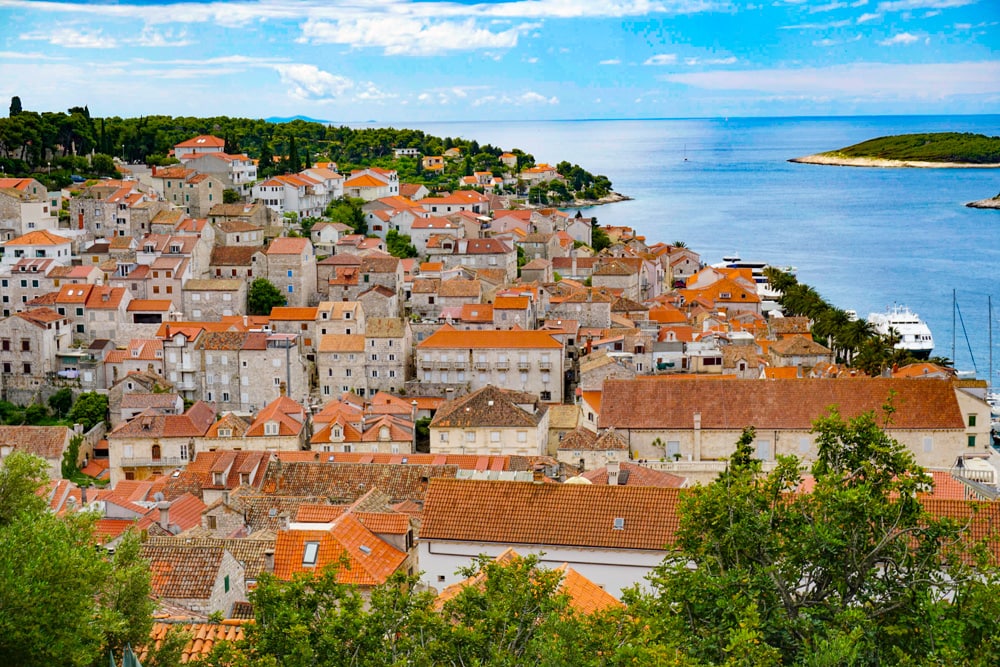
Hvar Town is a port, and passenger ferries from Split arrive here. Hvar Town is one of the top day trips from Split you can do, with just enough to see and do in a few hours.
Start your exploration of Hvar Town with the St. Stephen’s Cathedral and St. Stephen’s Square. The cathedral has a lovely facade, with a white stone bell tower. Inside, there is lots of art to admire.
Saint Stephen’s Square is really large: the largest in Dalmatia. It is lined with beautiful buildings, and contains lots of cafes and restaurants with outdoor seating. It’s a great place to relax for a bit with a drink and people watch!
The Spanjola Fortress on top of the hill is a must-visit in Hvar Town. The walk up is beautiful, especially in the spring, when wildflowers bloom in profusion along the trail. You can also drive up to the fort.
On a clear day, the views from the Spanish Fortress are breathtaking. You’ll be looking out over the orange rooftops of Hvar Town, and the Pakleni Islands lying offshore. You can take a boat trip out to the islands for a closer look.
Stari Grad is where the car ferries arrive on Hvar Island. The seafront promenade, and the stone streets and alleys here are made for wandering, and the ambience is more laid-back than in glitzy Hvar Town.
Late spring and fall are excellent times to visit Hvar Island for fewer crowds. For a more lively visit, pick the long, warm days of summer, when you can also enjoy Hvar’s beautiful beaches.
Best Places to Visit in Croatia: Dalmatia
Split
Split is the largest city in Dalmatia, and, other than being a wonderful destination in itself, it is also a great base from which to explore many places in Croatia, from islands to historic towns.
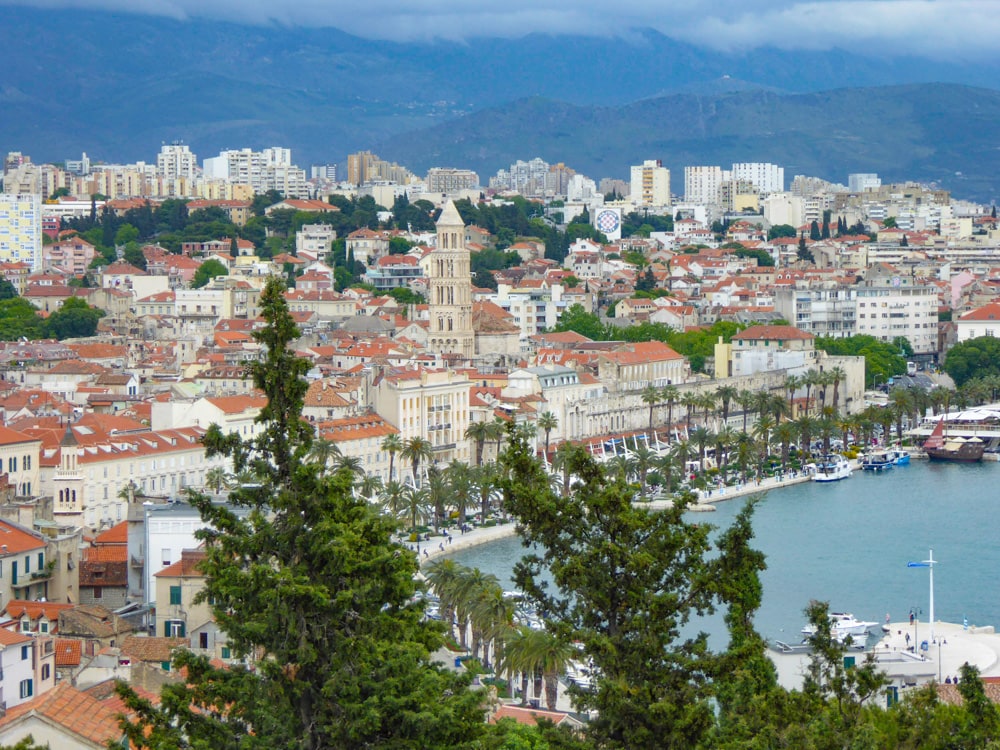
Diocletian’s Palace is a UNESCO World Heritage Site. The palace is actually an entire town, Split’s Old Town. Here you can see various sights, such as the Cathedral of St. Domnius. Climb the tall bell tower for panoramic views.
The Peristyle is a courtyard where you can walk around or sit for a bit to take in the beautiful architecture. Sometimes the Peristyle hosts concerts or shows, and if one is scheduled for when you plan to visit, you must attend! The acoustics are marvelous.
Stroll the Riva, Split’s waterfront promenade. You’ll get wonderful views of the water and the boats, and there are numerous cafes and restaurants along the waterfront if you wish to enjoy a drink or a meal.
Marjan Peninsula is located just outside the Old Town in Split. Climb the steps to Prva Vidilica Na Marjanu, a viewing platform from where you get spectacular panoramas over Split and the water. If you enjoy hiking or biking, the Marjan Peninsula offers many trails.
Visit Klis Fortress, located about 7.5 miles from the center. If you have a car, it is an easy drive, else you can visit on a guided tour or take the public bus.
The fortress offers sensational views of Split and the Dalmatian Coast. For Game of Thrones fans, the fortress served as the location for Meereen!
Zadar
Located on the Adriatic Sea, Zadar is home to a Romanesque old town that charmingly intertwines with modern Dalmatian life, and is one of the best places to visit in Croatia if you’re looking for a sun-swept destination that’s bursting with history!
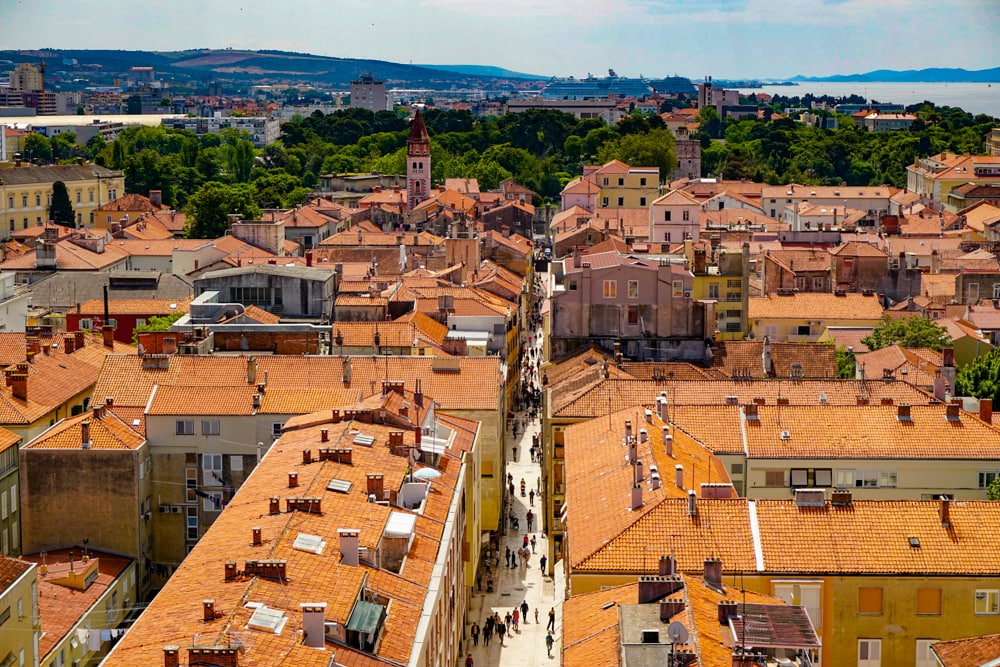
Although Zadar is one of the most walkable cities in Europe, there is no shortage of things to do. The Sea Organ, which emits soothing sounds when the sea flows into its pipes, is a must-see, as is the Greeting to the Sun, which comes alive with color at dusk.
Be sure to climb the Bell Tower of the Zadar Cathedral for panoramic views over the rooftops of Old Town Zadar, visit the massive Church of St. Donatus, and wander Five Wells Square.
The best time to visit Zadar is May-October, but to avoid inflated prices, go on either side of the European summer holidays. If you
want to visit during a time of celebration, the Full Moon Festival and Zadar Outdoor Festival are usually held annually.
Zadar is a great base for exploration of the area, so why not do a day trip to Plitvice Lakes National Park or to Kornati National Park?
There are bakeries dotted throughout Zadar, many of which are take-away and can make for inexpensive places to grab lunch!
Suggested by Michelle of The Scrapbook of Life
Trogir
Trogir is a tiny town along the Dalmatian Coast of Croatia that packs a mighty punch when it comes to beauty and charm. Trogir is definitely one of the must-visit places in Croatia, whether you visit for the day or for a longer time.
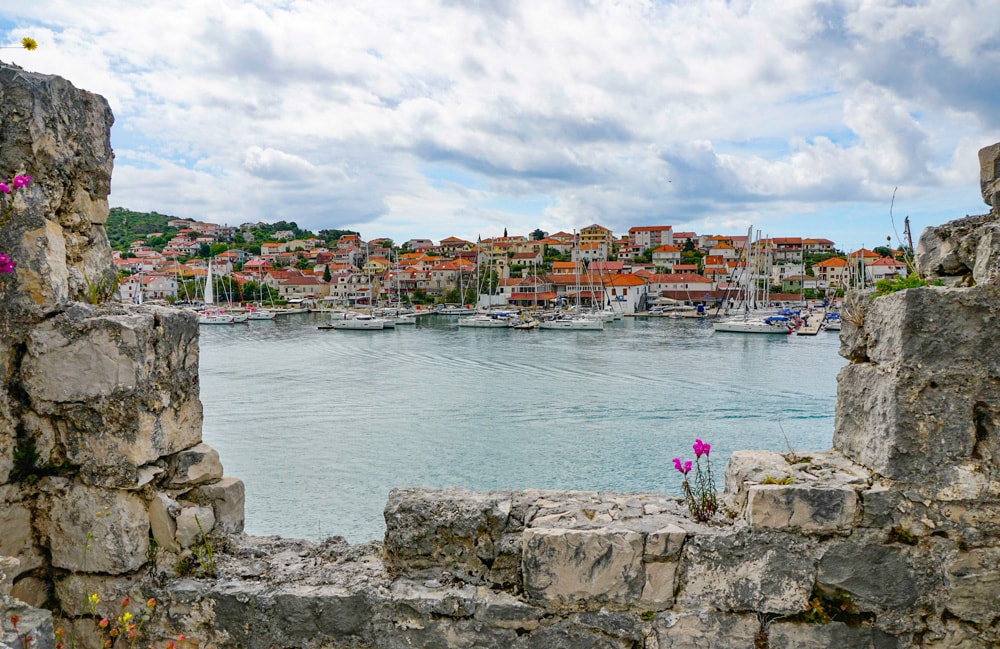
Walking the narrow streets and alleys of the town is one of the best things to do in Trogir. The beautiful stone buildings that line the charming little streets will make you want to stop to take photos literally every few steps!
Visit the Cathedral of Saint Lawrence, a magnificent cathedral for a town the size of Trogir. The detail at the main entrance is stunning, and the interior impressive.
Climb to the viewing gallery at the top of the Bell Tower of the Trogir Cathedral, for 360-degree panoramic views over the rooftops of the town and the water beyond.
The Central Square is not only a place to chill and people watch, but there are many buildings to admire here as well. The clock tower and loggia are gorgeous, as is the Cipiko Palace.
Walk the scenic waterfront promenade to the end, where you will find the ruins of the Kamerlengo Fort. You can walk the walls of the fort for beautiful views.
The shoulder seasons of late spring and early fall are excellent for visiting Trogir when it’s less crowded. Summer offers beautiful weather, but expect crowds during the day, since Trogir is one of the most popular day trips from Split.
Brac Island
Brač Island is located in the Adriatic Sea, off the coast of Dalmatia. It is one of the top places to visit in Croatia, for its spectacular natural beauty and the world-famous Zlatni Rat Beach.
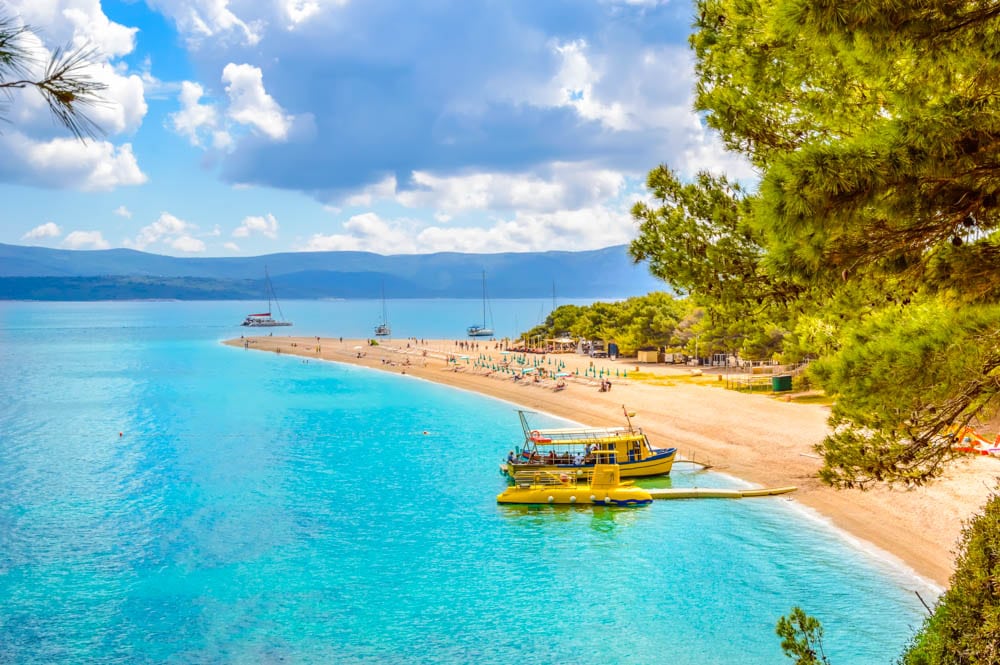
Zlatni Rat (Golden Horn) Beach is located by the town of Bol. So named for its shape and the golden color of the sand here, the beach is one of the most famous in a country known for its beaches. Zlatni Rat’s shape and color is best appreciated from above.
Drive to the top of Vidova Gora for stunning panoramic views over the island and the Adriatic Sea. Vidova Gora is the highest point on the island, and you can drive up or hike to the top.
Located on the southern side of Brac Island, Pustinja Blaca is a sixteenth century monastery that is now a museum. From Dragovoda, the monastery is about 30 minutes on foot one way. For a small fee, you can get a guided tour of the fascinating museum.
Supetar is a port and the largest town on the island. Walk the waterfront promenade and visit the Supetar cemetery, where you will find many ornate tombstones.
Milna, a small and super picturesque town, is also worth a stop, if only to take photos! Škrip is another small picturesque village worthy of a wander.
Late spring through early fall is the best time to visit Brac, with fewer crowds at the fringes of this time period. Summer is crowded, but ferries are more frequent and of course it’s the best time of year to enjoy the beach!
Krka National Park
In the middle of Croatia lies beautiful Krka National Park , which is full of waterfalls (seven!), lakes, ruins, and boat rides.
The largest waterfall in Krka is Skradinski Buk. There’s a loop hike of around an hour on which you can see this waterfall in all its glory. Expect crowds here in the summer, since walking this loop is the most popular activity in the park.
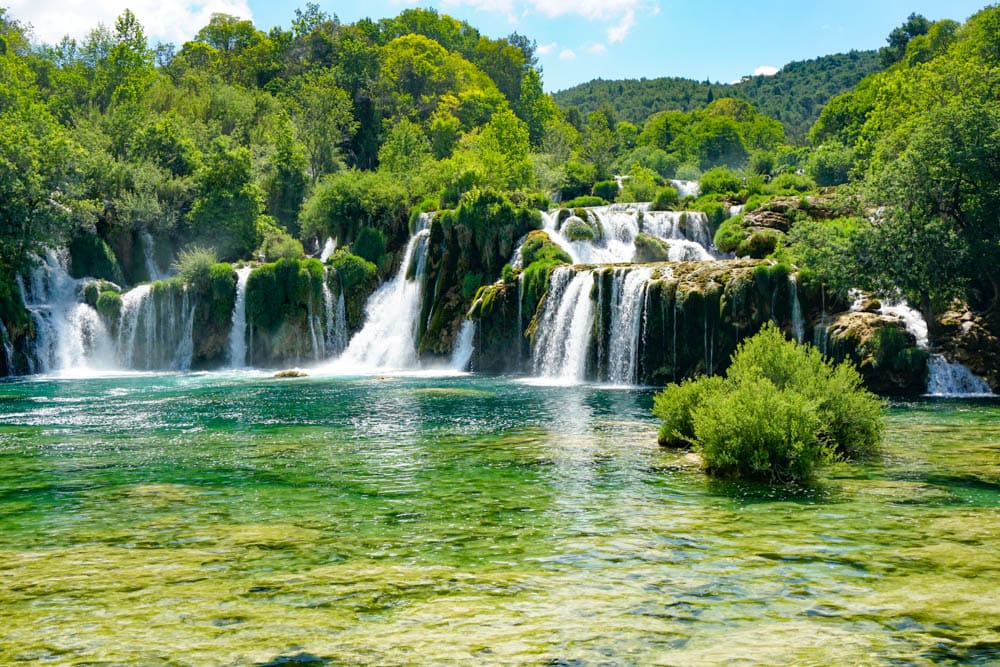
Do the boat ride to Visovac Island and visit the abbey, museum, and church on the island. There has been an abbey here since the 14th century.
Hike to Roški Slap, the second most popular waterfall in the park. The waterfall consists of twelve traps of travertine waterfalls with a 49-foot drop at the end.
Finally, visit the archeological site of Burnum, an old Roman camp. The site includes the remnants of the only surviving Roman military amphitheater in Croatia.
Krka National Park is open year round. However, in the winter months not all attractions and entrances are open. Boat and bus transport may also be limited or unavailable in the winter.
There are five entrances to the park, with the Lozovac entrance being the main one. Solaris Beach Resort in Šibenik is a good place to stay.
Suggested by Cosette of KarsTravels
Planning a visit? Our ultimate guide to Krka National Park has all the info you need to plan your trip!
Sibenik
If you’re looking for the best places to visit in Croatia, you should go to Šibenik! It’s the oldest Croat town and served as the home of the Croatian monarch at one point.
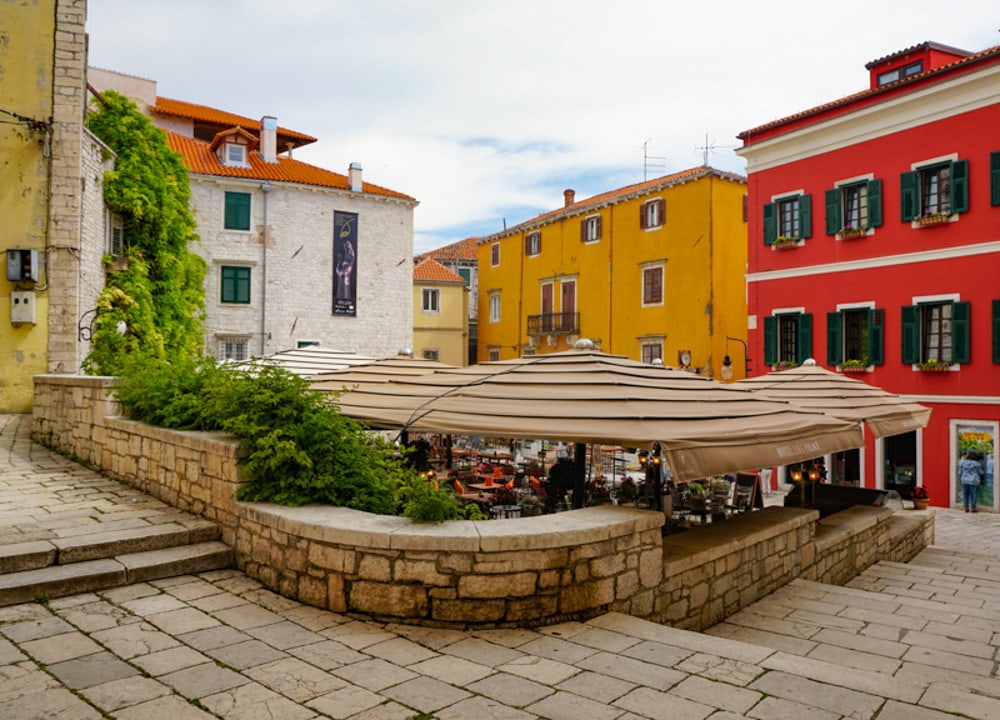
Sibenik was occupied by the Venetians, Byzantines, and Hungarians at various times. There are several excellent things to do in Šibenik!
Make sure to wander around the streets of the city’s Old Town. Much of the medieval neighborhood is built of stone, including the restored Katedrala sv. Jakova (the Cathedral of Saint James) and many other structures.
Šibenik is situated by the sea, and a walk along the Riva, the waterfront promenade, is a must. Grab a gelato and walk to the end, where you’ll find Banje Beach. This is the city’s public beach, where you can relax and enjoy the day.
You must also plan to visit at least one of the city’s four ancient forts. Šibenik has three on the hillside above the town and one floating out in St. Anthony’s Channel. The city’s four fortresses are open to the public and offer stunning views.
Summer is, of course, the best time to come to Šibenik, but the shoulder season also offers beautiful weather with far fewer crowds.
If you want to stay right on the Riva, the Armerun Heritage Hotel just opened and has nice rooms and a great outdoor terrace, which turns into a bar at night.
Suggested by Lyndsay of The Purposely Lost
Vis Island
Vis is a less-visited but no less beautiful island in the Adriatic Sea, off the Dalmatian Coast of Croatia. Untouched and tranquil, Vis Island is a wonderful place to slow down and appreciate the turquoise waters and beautiful beaches at a slower pace.
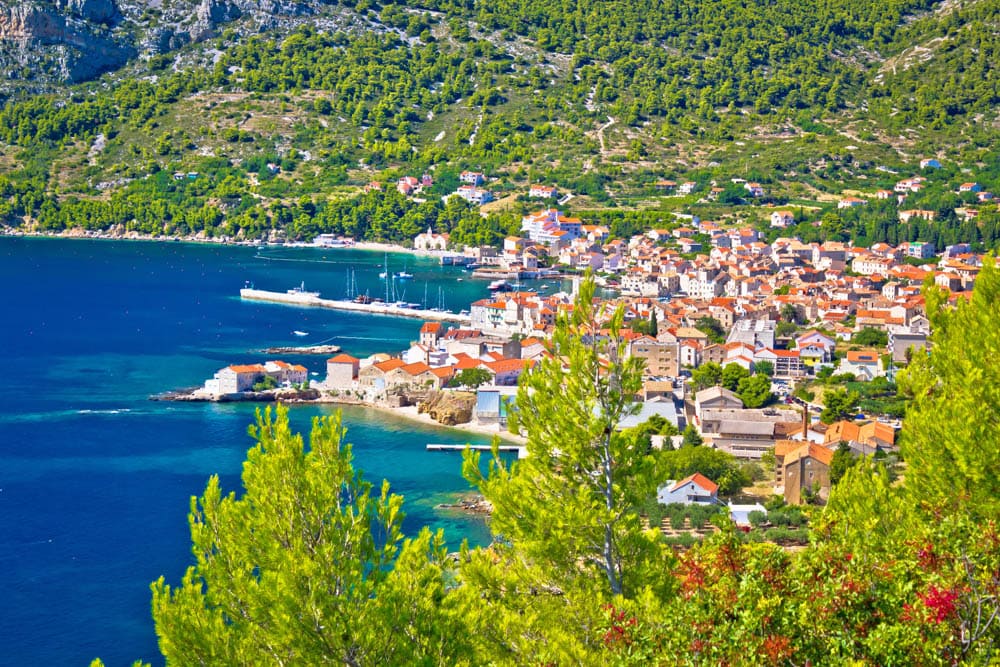
Stiniva Beach is one of the most beautiful beaches in Europe. A pristine cove sandwiched between towering cliffs, Stiniva Beach features stunning views. Getting down to the beach via the steep rocky path is part of the adventure, or you can arrive by boat.
There are several other must-visit beaches on the island, from Stoncica Bay to Milna Beach and Zaglav Beach. Milna Beach is easily accessed, and Zaglav Beach is a short walk. Most beaches on the island are pebbly rather than sandy, so bring water shoes!
Komiza is a picturesque fishing village located on the western side of Vis Island. Wandering the streets of Komiza is fun. Browse the many shops and art galleries, and enjoy a drink or a meal at a waterfront restaurant.
Vis is known for its vineyards. The island produces two wines, a robust red and a dry white. If you enjoy wine, visit a few vineyards for tastings, and enjoy lunch as well. You can go independently, or join a tour.
While July and August are the high season for visits to Vis Island, you’ll likely find it more economical to visit in the shoulder months of June or September. Summertime tends to bring more visitors to Vis.
Makarska Riviera
The Makarska Riviera is a 37-mile stretch of beautiful coastline between Brela and Gradac on the Dalmatian Coast of Croatia. The town of Makarska makes a good base from which to explore the coast.
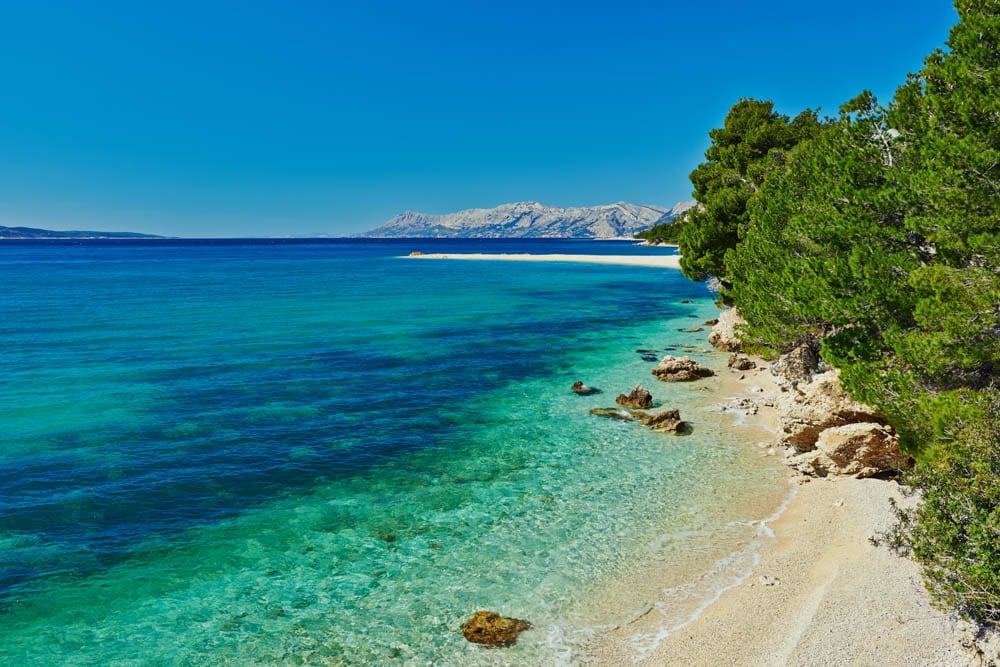
Beautiful beaches fringed with pines, the turquoise waters of the Adriatic Sea, tranquil bays, and charming little towns: what could be more enticing? You can easily spend a few days here, soaking up all that natural beauty.
Makarska town has a lovely seaside promenade for strolling. You can also go hiking on Mount Biokovo, the tallest peak in Dalmatia. Biokovo Nature Park is open between April and mid-November, and you can drive up to the park.
Visit the Franciscan monastery in town. The 17th century structure has a museum in its basement, with a large collection of snails and shells. Spend time on one of Makarska town’s many beautiful beaches.
Baska Voda, just a few miles up the coast from Makarska town, is known for its marvelous beaches. The blue flag Nikolina Beach is located in the town center and offers amenities. Ikovac Beach and Podluka Beach are also pebble beaches with facilities.
Brela, at the north end of the Makarska Riviera, offers pristine pebble beaches lined by pine trees. Punta Rata Beach is rated one of the top beaches in the world.
Summer is high season, so expect crowds if you visit then. It is the best time of year to enjoy the many beaches along the coast. You can also visit in the fringe months of April-May and September-October if swimming in the sea is not high on your list.
Mljet National Park
An outdoor lovers’ paradise and one of the most beautiful national parks in Croatia, Mljet National Park is located on Mljet Island, which lies in the Adriatic Sea off the Dalmatian Coast.
The park covers a large area along the border of two saltwater lakes on the island: Veliko Jezero and Malo Jezero.
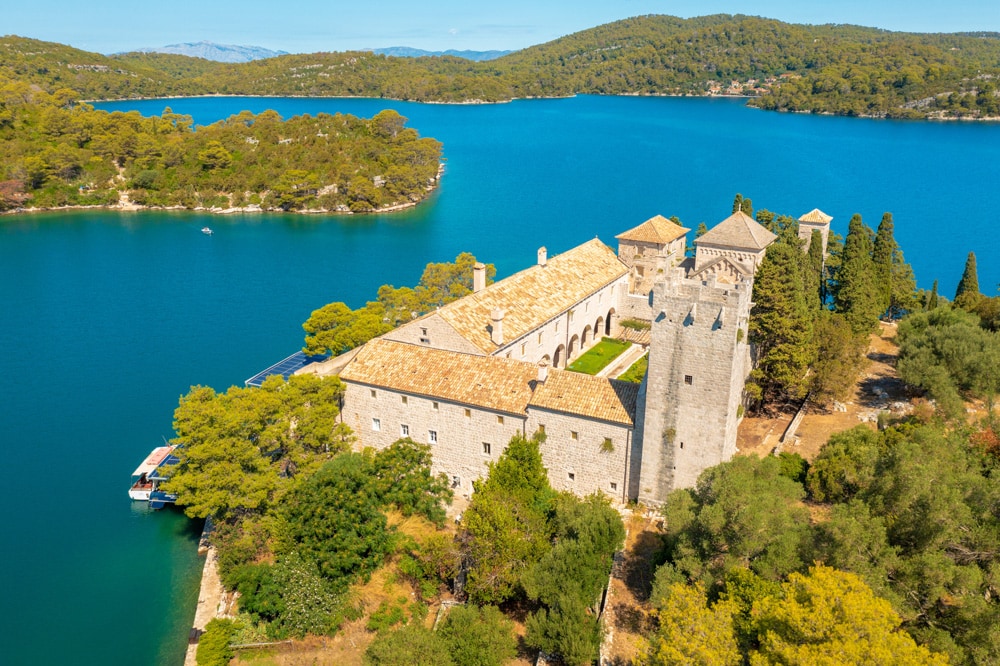
Rent a bike inside the national park and cycle the path around Veliko Jezero, the large lake in the park. The ride offers spectacular views of the lake and the surrounding scenery.
Walk around the shore of the small lake along pleasantly shaded paths, and soak in the views of the lake. You can also walk around the shore of the big lake, or hike up into the surrounding hills for views of the landscape from above.
Rent a kayak at the small bridge between the two lakes and paddle to enjoy the views from a different perspective! You can take a kayak to Sveti Marija Island in the big lake.
You can also take a boat trip to Sveti Marija Island, where you’ll find a large Benedictine monastery now turned into a cafe and restaurant. The monastery dates from the 12th century!
Swimming in the lakes and sunbathing along the shores are popular activities in Mljet National Park. You’ll find the water here warmer than the open sea.
To get to Mljet National Park, you’ll need to take a ferry to Mljet Island. A catamaran ferry from Dubrovnik operates year round but you’ll find more departures in the warmer months if you are looking to visit just for the day. Ferries also arrive her from Split but take longer.
Omis
Omis is a fantastic place for adventure lovers. It is only about 16 miles from Split and therefore perfect for a day trip, but the town has so much to offer that you can easily spend a whole week here.
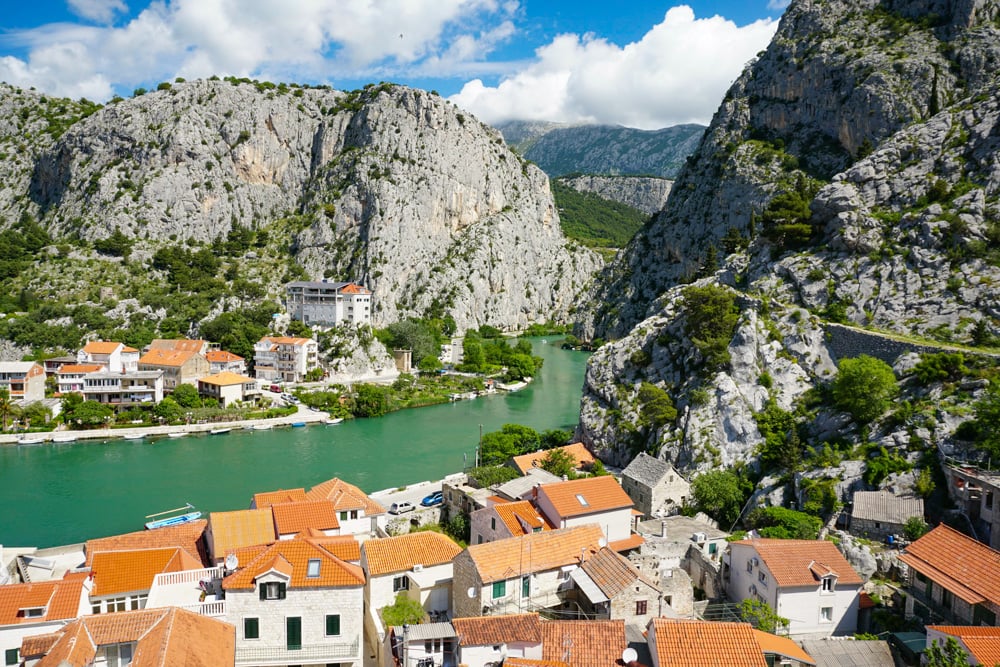
For the best view of the area, hike to Starigrad Fortress. The return hike is about 2.5 miles, and it will take you around 2 hours.
Another way to get a bird’s eye view of the area is to go zip lining. ZipLine Omis has eight wires offering beautiful views of the Cetina River and the nearby mountains.
Of course, Croatia is famous for its water sports, and Omis has no shortage of them. There are several companies offering rafting tours on the Cetina River. Some even combine rafting with some fun canyoning elements such as rope swings, cliff jumping, and walking behind a hidden waterfall.
Omis has several beautiful beaches from which to pick for some quality sun and sand time. Velika Plaza is possibly the most convenient to visit: it is a blue flag sand beach right in the center of town. It is family friendly, and you can rent beach umbrellas in the summer.
If you want to enjoy the beaches in Omis, then the best time to visit is the summer.
Omis has several types of accommodation, including guest houses and hotels. You can even stay at a campsite: just remember to bring your camping equipment.
Suggested by Krix of Travel Hacker Girl
Kornati National Park
The Kornati Islands are an archipelago of several dozen islands and islets, located off the Dalmatian coast of Croatia. Kornati National Park encompasses 89 of the islands that make up the archipelago.
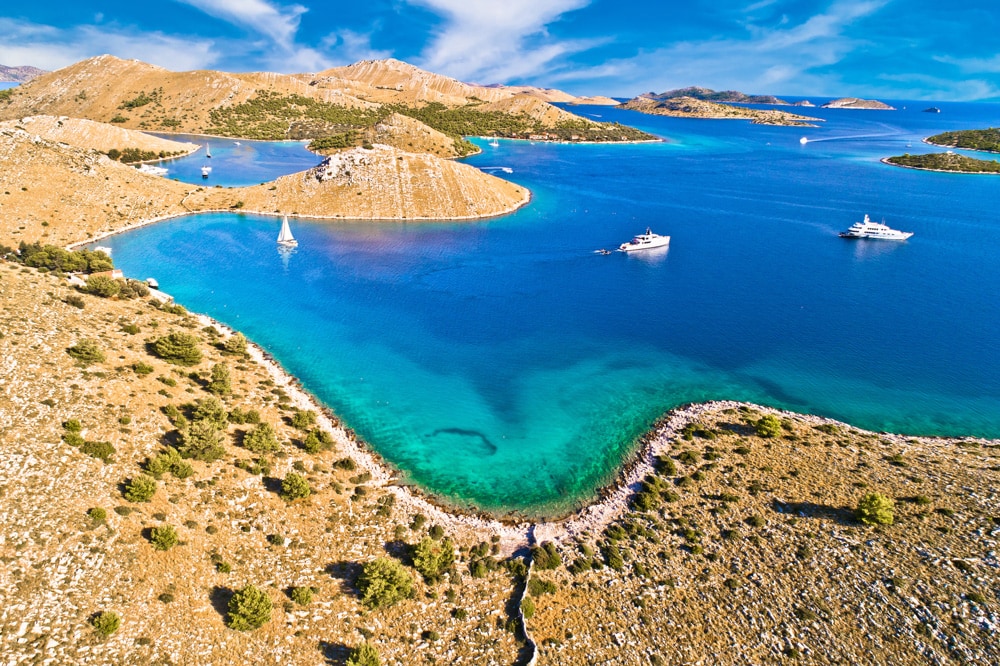
Kornat is the largest island in the archipelago. There are no permanent settlements on the islands, but you’ll see ruins and remnants of old walls when you explore.
The easiest way to visit Kornati National Park for the day is on a guided boat trip. Kornati National Park is one of the most popular day trips from Zadar on the mainland.
Swimming, diving, and snorkeling in the waters of Kornati are hugely popular. You can only go scuba diving as part of a guided tour, and it is only permitted in designated zones. Swimming and snorkeling are freely allowed.
Hiking is another popular activity in Kornati National Park. Although the land is privately owned, you can hike the various trails that lead to viewpoints offering breathtaking views over the archipelago and the sea.
If you enjoy wildlife viewing and birdwatching, keep your eyes peeled as you explore the Kornati National Park. You may see peregrine falcons, buzzards, kestrel, gulls, and more.
The park is open year round, but spring and fall are ideal times to visit. If you visit in the summer, note that you will not find much shade on land.
Korcula
Visiting Korcula is an excellent option if you plan on doing island hopping in Croatia. Frequently referred to as mini-Dubrovnik, Korcula town is definitely one of the best places to visit in Croatia.
Surrounded by ancient walls, Korcula Old Town is the main destination to visit on Korcula island.
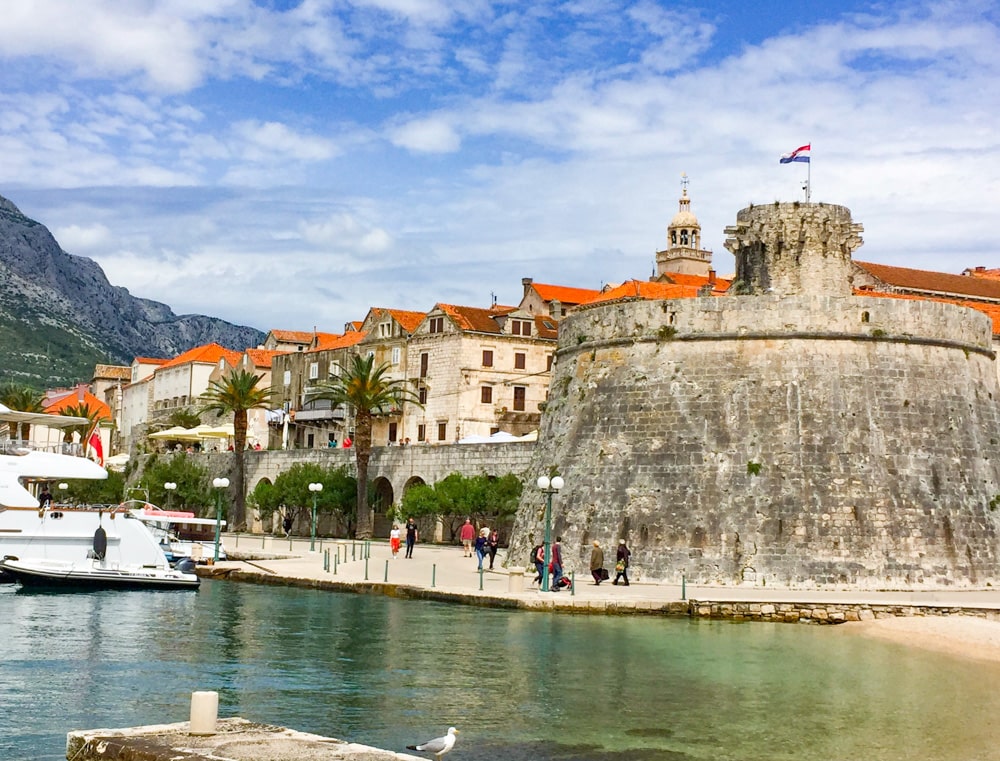
Although the town is relatively small with few attractions, it makes for a wonderful island escape in the Dalmatia region.
Since the town is believed to be the birthplace of Marco Polo, one of the main things to do here is to visit his house and a museum to learn more about his adventures around the world and his life in general.
Later, stroll down the narrow cobbled streets and observe the beautiful architecture before walking up the steep stairs to the Bell Tower for some panoramic views of the city and the Adriatic Sea.
In the evening, dine on local fare at one of the outdoor cafes, accompanied by the local wine, Grk, made from the white grape type of the same name. And if you are interested in visiting wineries, you can easily take a day trip to Lumbarda, where Grk grapes are grown.
The best time to visit Korcula is in the summer to have a relaxing time at its sandy beaches, which feature pristine waters and a picturesque fortified town in the background.
Suggested by Baia of Red Fedora Diary
Blue Cave
Located on the east side of Biševo Island off the Dalmatian Coast of Croatia, the Blue Cave (or Blue Grotto) is a very popular tourist destination. Like the Blue Cave in Capri, Italy, Bisevo’s Blue Cave can be viewed by boat.
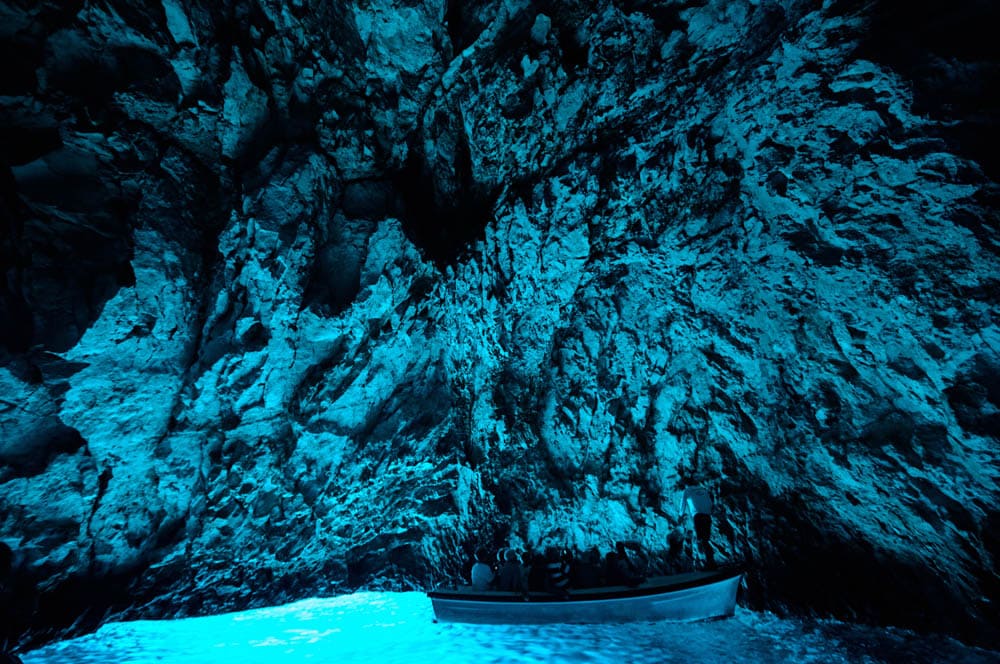
Bisevo Island is made of limestone rock, and over time, the waves eroded the stone to carve out the small cave. The cave is only about 80 feet long, about 40 feet deep, and about 50 feet high.
An entrance large enough for small boats was artificially created in 1884. The natural entrance to the cave is on its ceiling, and it is through this opening that the rays of the sun stream into the cave and create the shimmering blue effect throughout the cave.
The best time to visit varies by season, but reportedly between 11 a.m. and noon is when the phenomenon usually occurs. Only authorized boats are permitted to enter the cave, and up to three boats can go in at a time.
You get just between 5 and 15 minutes inside the cave, enough to take in the beautiful natural phenomenon and snap a few photos. No swimming is allowed inside the cave. The cave is extremely popular, and gets thousands of visitors each season.
The most common way to visit the Blue Cave is by guided speedboat tour from one of several origin points on the mainland or nearby islands: Split, Trogir, Hvar, Vis, Makarska, or Omis. The island of Vis is located very near the Blue Cave.
Tours only run when weather permits, and usually include other destinations, since it’s not a given that you’ll be able to enter the Blue Cave even once on the tour.
Good to know: There is also a Green Cave near Vis Island, located on the islet of Ravnik. While it’s not as famous as the Blue Cave, you can swim or snorkel inside the Green Cave.
Primosten
Primosten is a tiny town along the Dalmatian Coast between Split and Zadar that’s worth a stop. It’s located on a scenic peninsula, and even before you arrive, you have to stop to see it from the road above: it makes for the perfect photo.
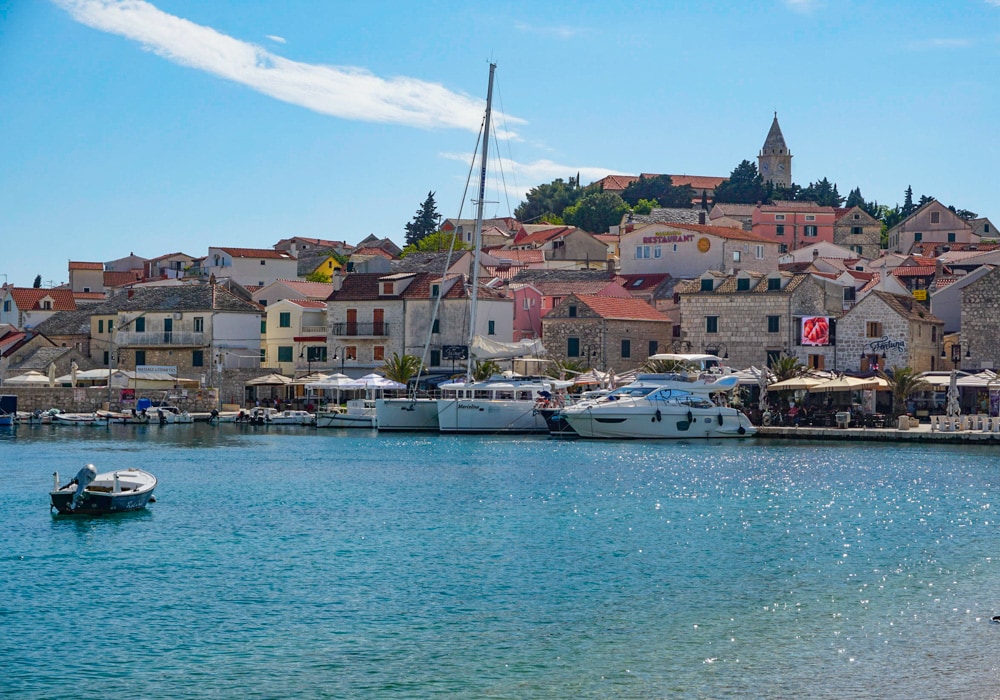
The seaside town is noted for its pristine beaches. Mala Raduča, one of Primosten’s beaches, if often included in round-ups of the most beautiful beaches in Croatia. It’s that beautiful!
Walk through the stone gate and wander the streets, pausing to admire the stone houses along the way. The main street leads up the hill to the Church of Saint George, a tranquil spot where you can sit and relax for a bit.
The cemetery is gorgeous, and offers spectacular views over the water and the islands and islets along the coast. It’s a beautiful spot at sunset.
Look for the statue of Our Lady of Loretto, over 55 feet high. It is reported to be one of the largest statues of the Virgin Mary in the world.
Once you are back down and out of the gate, walk the promenade to take in the views of the Adriatic Sea and the beach. Admire the statue of the fisherman and the cat, one of the most photographed sights in the little town.
Little restaurants in town offer meals focused on fresh seafood, if you want to stop for lunch. Nearby you will find Bucavac Vineyards, the vines growing within an extraordinary pattern of old stone walls that looks exactly stone lace.
Visit Primosten in the summer to enjoy the beaches. The shoulder months of May and September are also good times to visit.
Pag Island
If you are looking for somewhere otherworldly to visit on your Croatian adventures, then Pag Island is a must visit. As you make the drive from Zadar, the landscape becomes increasingly desolate until you reach the moonlike, rocky landscape of Pag.
The island looks stunning against the blue Adriatic Sea and blue sky. You’ll feel like you have left Europe behind and entered somewhere quite different.
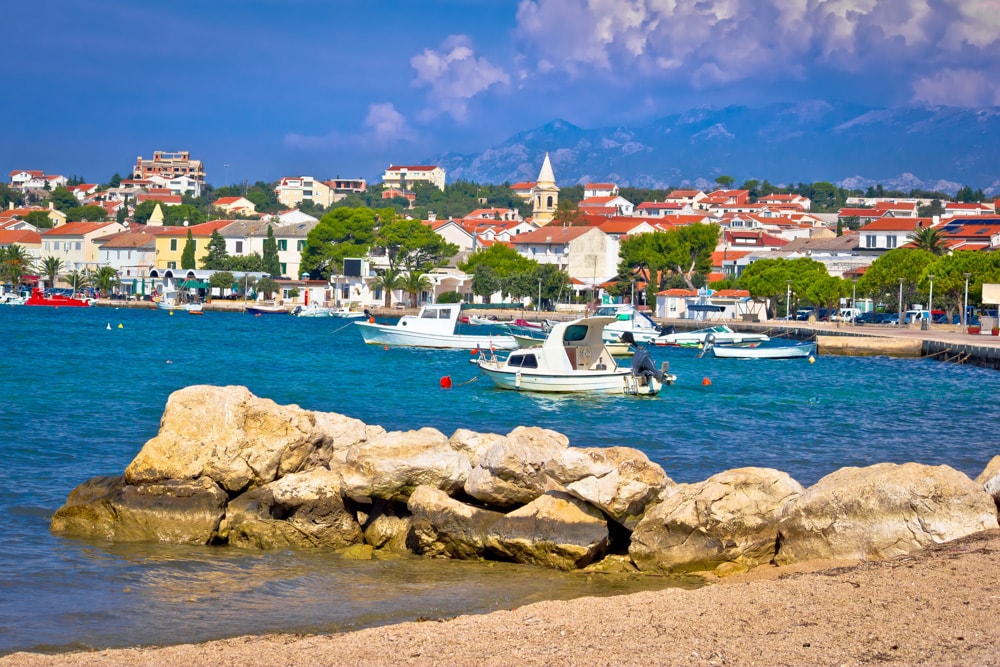
There is more to Pag than its landscapes, however. It’s famous for its lace and cheese production as well as some lovely little villages perfect for exploring, with little shops and alleyways. There are also great beaches, and it is known for its nightlife and big parties as well.
If you love cute towns, definitely head to Pag Town. It’s a great town to wander, with a beautiful harbor, great beaches, and many restaurants.
If you love to party Ibiza-style, Zrće is the place to head for nightlife. Beachfront club Aquarius is particularly popular.
For history lovers, Novalja is where you can find an original Roman aqueduct known as Talijanova buža. The aqueduct dates back to the 1st century and is over 0.6 mile long, and you can explore it with help from the Novalja tourist office.
You shouldn’t leave Pag without trying its famous Paški sir (Pag cheese). You’ll find it for sale in many places including at roadside stalls.
For Pag’s most unusual attraction, visit the Pag Bermuda Triangle. This weird three-sided formation of stone patterns is about 98 feet across and was discovered in 1999. The stones are quite different from the millions of others in Pag and no one knows how they got there.
The best time to visit Pag is in the warmer months, from May to September. If you love partying and music festivals, Pag is home to many festivals, usually held in July and August.
Pag is connected to mainland Croatia via a bridge. You can catch a bus or drive yourself easily. In about 45 minutes, you can be in the centre of Pag.
Suggested by Sharon of Dive into Germany
Paklenica National Park
If you’re looking for must-visit destinations in Croatia, you can’t miss gorgeous Paklenica National Park. Paklenica is a stunning wilderness area that is famous for its dramatic canyons and karst rock formations as well as black pine forests.
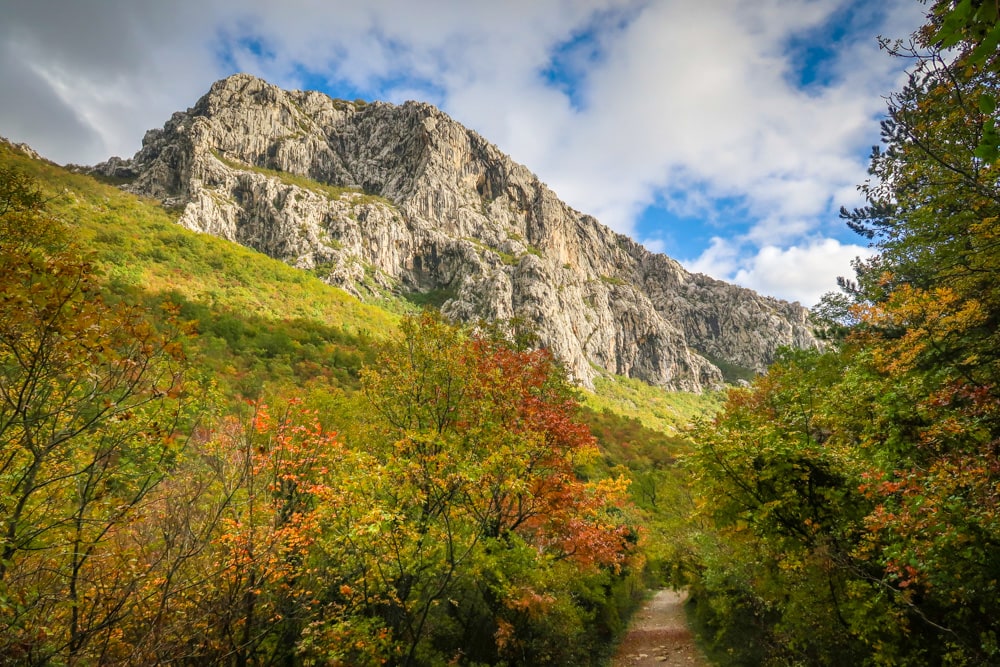
The best way to get to know the park is on foot. Approximately 150-200 km (93-124 miles) of Paklenica National Park hiking trails span the park with various difficulty levels and lengths. These paths explore the impressive Paklenica Velika (big) and Paklenica Mala (small) canyons as well as the Lugarnica forest and beyond.
During your hike, be sure to visit one of the park’s famed mountain huts for a snack and a drink before heading back to the entrance.
Climbing is another popular activity at the national park. Paklenica boasts over 360 climbing routes, making it the largest climbing site in Southern Europe.
If climbing or hiking isn’t your thing, you can also try your hand at spelunking. Manita Peć is the park’s most well-known cave and can be toured with a guided visit (for a small fee).
The best time to visit Paklenica National Park is from early spring to late fall. To avoid the summer heat (and the crowds), consider going in autumn, when the leaves are changing colors.
Zadar is an hour’s drive away from Paklenica and makes the perfect base of operations from which to explore the area.
Text and photo by Katy of A Rambling Unicorn
Peljesac Peninsula
The Pelješac Peninsula is located on the southern Dalmatian Coast, just north of Dubrovnik. The rugged landscape is dotted with small villages, and you’ll find vineyards and restaurants to sample local food and wine: the area is known for its oysters and mussels.
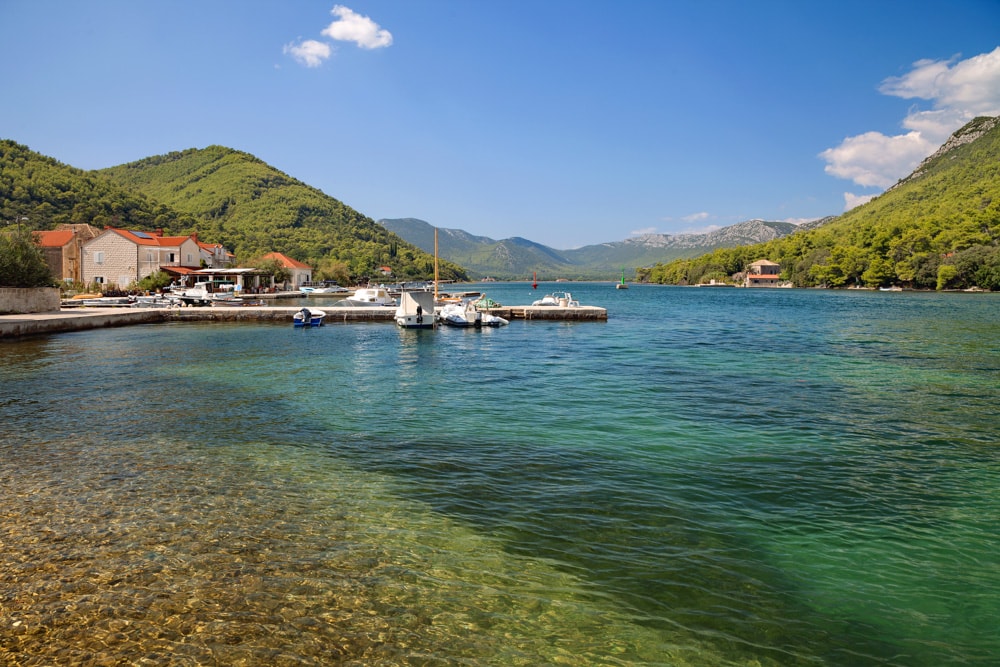
Small enough that you can tour it in a day, the Peljesac Peninsula is also an option if you are looking for a laid-back place to relax during your trip to Croatia. You can even stay at one of the wineries that offer accommodations.
Ston is known for its 14th century defensive walls, which you can walk from the town of Ston to Mali Ston. The walk offers beautiful views of the hills and the sea. In Ston Town, there are several churches and historic palaces you can tour.
Just outside the town center are the famous salt flats of Ston. You can walk around the flats and pick up a bag of salt as a souvenir to take home with you!
Orebić is located in the peninsula’s wine country. From here, you can go on tours of vineyards in the area. In town, there are many restaurants to try: you’ll find excellent seafood here. Many of the wineries boast topnotch restaurants as well.
Of course there are numerous beaches along the peninsula as well, if you want to enjoy the sun and the sea. Mokalo Beach, near Orebic, is a family-friendly beach with amenities. Trstenica Beach offers loungers for rent, as well as kayaks and paddle boats.
Summer is the perfect time to visit the Peljesac Peninsula, because it does not feel crowded here in the summer months, and you’ll have long days and great weather to explore.
Where to Go in Croatia: Istria
Rovinj
The picturesque town of Rovinj is located on the egg-shaped Istrian peninsula of Croatia. It has been the battleground for many a conquerer, as can be witnessed by the architecture around town: Venetian, Austrian, Yugoslavian, and finally Croatian.
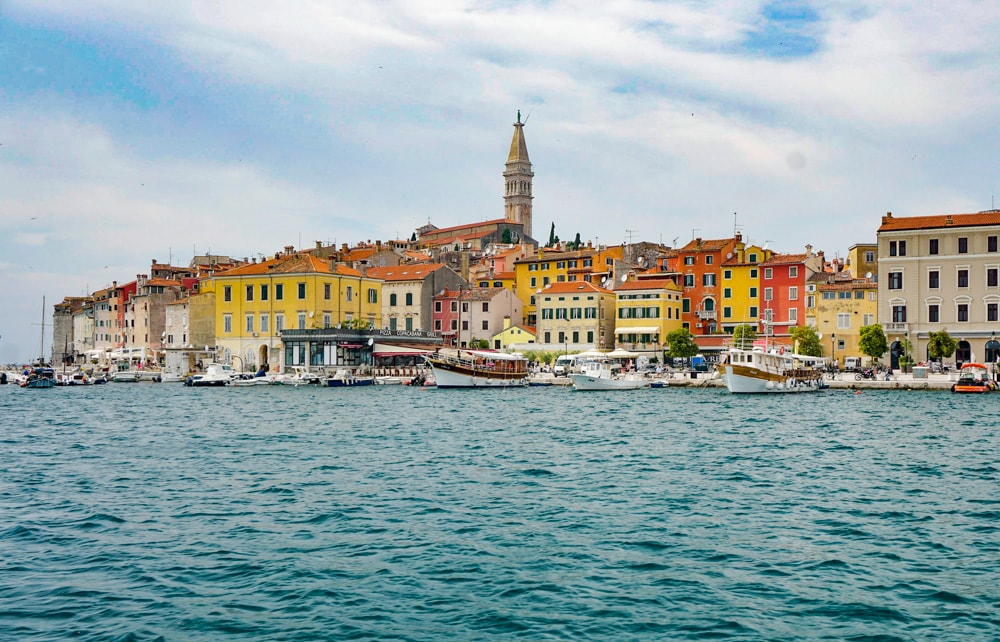
This mix of cultures, the extraordinarily good coffee, the abundance of truffles, and, of course, the stunning location right off the Adriatic Coast, make Rovinj a must for anybody doing a road trip through Croatia.
When visiting Rovinj, make sure to walk up to the Cathedral of St. Euphemia. Both the stunning inside of the cathedral as well as the views from the grounds are well worth the climb. The grounds are a fabulous sunset spot in Rovinj.
Walk back into town towards the main square (Trg Marsala Tita) and hunt down Balbi’s Arch before making your way to the charming harbor of Rovinj, the perfect spot to drink an espresso or a glass of white wine.
Mediterraneo bar is the perfect spot for an aperitivo. Located off the main street, it is a little bar consisting of chairs and tables placed delicately on jutting rocks overlooking the Adriatic.
Surrounding the Mediterraneo bar are plenty of other local watering holes and restaurants serving fresh fish or pasta with fresh Istrian truffle. Wash down your meal with a glass of local red wine, Teran.
Suggested by Caroline of Veggie Wayfarer
Porec
Porec is one of the best places to visit in Croatia if you love picturesque historical coastal towns.
One of the best things to do in Porec is to stroll through the old town. Some of the highlights include the Neptune Temple, House of Two Saints, Zuccatto Palace, and of course the UNESCO World Heritage Site, the Euphrasian Basilica.
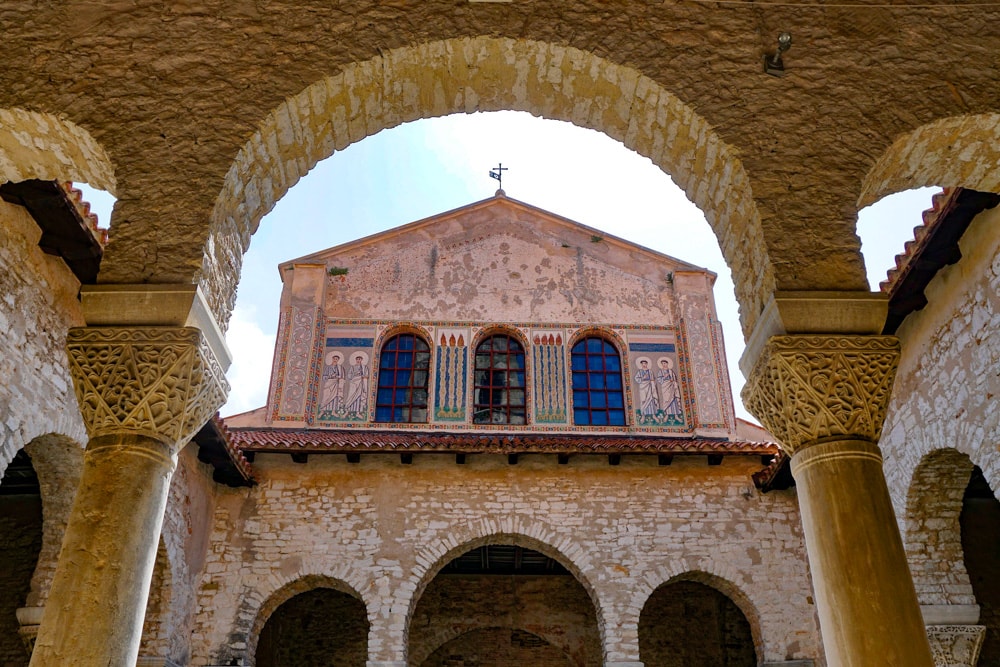
Once you’ve soaked up all that history, it’s time to hit one of Porec’s beautiful beaches, such as Zelena Laguna, Delfin Beach, or Brulo Beach.
If you are more into active holidays, head over to the Aqua Colors Waterpark or the Ski Lift for waterskiing or wakeboarding.
As a nature-lover, you can visit the Baredine Cave, a cool cave with multiple underground chambers and an underground lake.
Lastly, a tip for the foodies. You will find plenty of great local restaurants in Porec. However, if you want to dine in a historical building with a great view, check out the restaurant Petorokutna kula.
Porec is very popular among tourists, so if you want to avoid the crowds, yet still enjoy pleasant temperatures, visit in April, May, September, or October.
Suggested by Lara of The Best Travel Gifts
Pula
Pula – in Croatia’s northern region of Istria – is both a wonderful city break and beach break destination. With its impressive Roman history, incredible beaches, and world-class vineyards, Pula is one of the best all-around places to visit in Croatia.
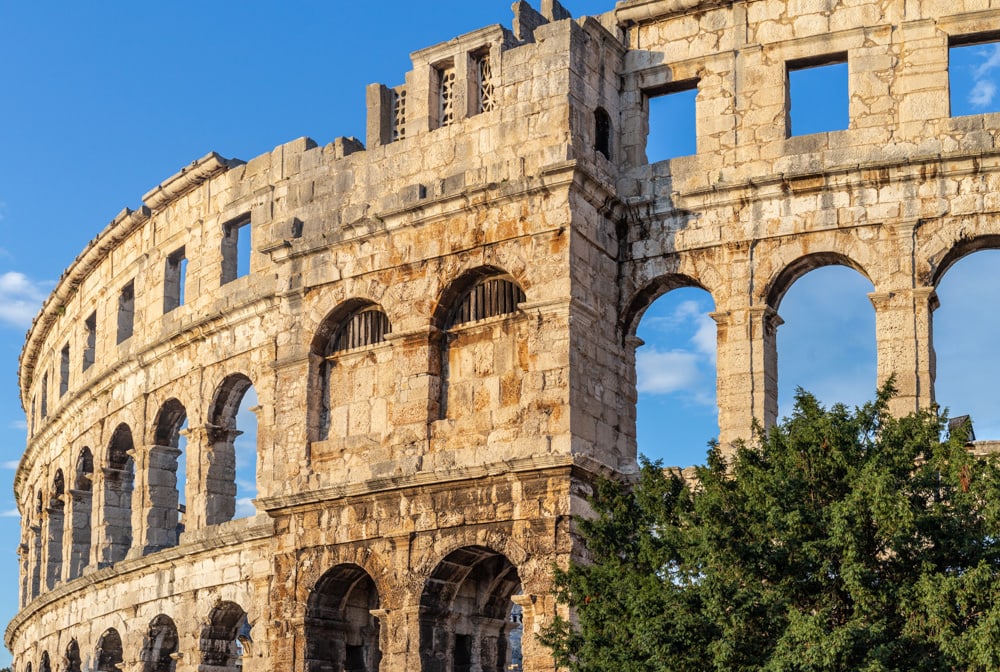
Walk in the footsteps of the Romans by visiting the 2,000-year-old Temple of Augustus and the stunning Pula Arena, one of the best-preserved amphitheaters left in the world. Truly spectacular!
Another must-do activity is to spend a day relaxing on one of Pula’s beautiful beaches. These pebble beaches have crystal clear and calm, warm seas: perfect for swimming, playing and cooling down. Ambrela Beach for sunset is particularly special.
No trip to Pula would be complete without trying the local wine. Produced on the region’s fertile land, you can try Istrian wine at Vina Benazic, located in the suburbs. Plus, buy a bottle of your favorite wine to take home!
Complete your trip with dinner at Pizzeria Jupiter. The pizzas here are just mouth-watering! And, the wine is inexpensive and plentiful too.
Though the climate is mild year-round, visit in late spring to early fall for the best weather. August is, of course, the busiest month with the European summer break.
Suggested by Zoe of Zoe Goes Places
Motovun
There are many lovely villages in Istria you can visit, but charming Motovun is undoubtedly a must for your itinerary for the region. It’s an ancient hilltop settlement, dating back to Celt and Illyrian times.
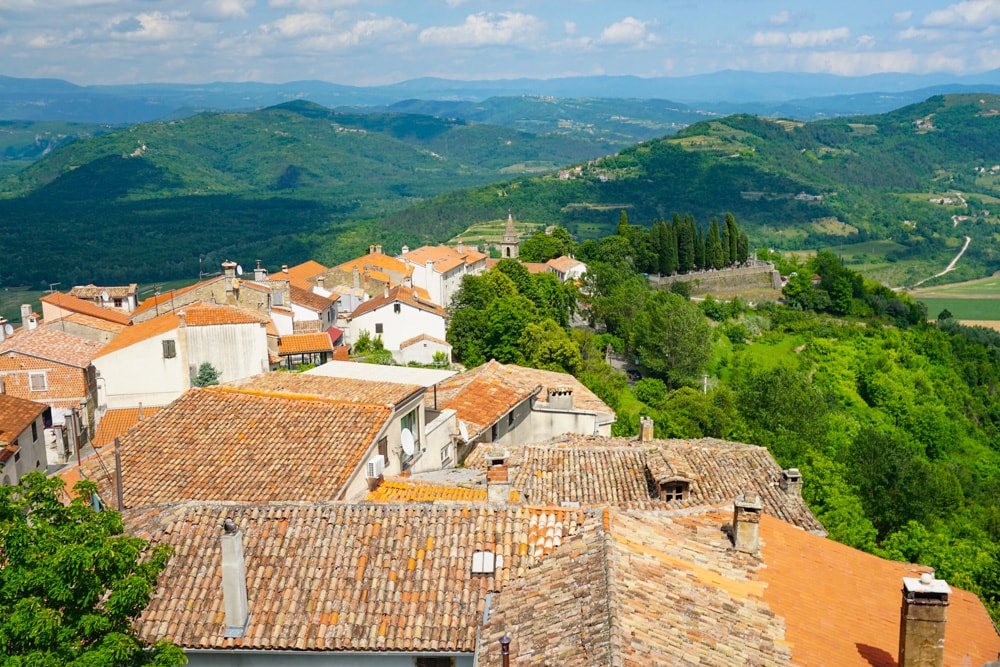
In the late 13th century, the medieval town of Motovun came under the control of Venice, who built fortifying walls around the town that you can walk today for gorgeous views over the surrounding countryside.
Walk the main street through the little town, browsing the little shops along the way selling truffle products, local honey, and other delicacies. Make sure you try pasta with truffle in Motovun: our lunch here was one of the best meals we had in our entire time in Croatia.
Admire the church of Saint Stephen, built in the Renaissance style from sketches believed to have been made by famous architect Andrea Palladio. Inside, you will find several notable works of art.
Just outside Motovun, you can walk in a protected natural forest. During the summer, the rare clematis viticella blooms profusely in this forest, the beautiful violet blooms adding another dimension of beauty to the walk.
Motovun hosts a popular film festival every summer. If you visit during the time it’s happening, be prepared for crowds. To enjoy the ambience of the town, we suggest visiting at a time other than during the festival.
Places to Visit in Inland Croatia
Zagreb
Zagreb is the capital city of Croatia, and there are lots of things to see when visiting.
The city has a diverse range of architecture, including Gothic, and lots of fine examples of Austro-Hungarian buildings. Zagreb also has a vibrant cafe scene that adds to its charm.
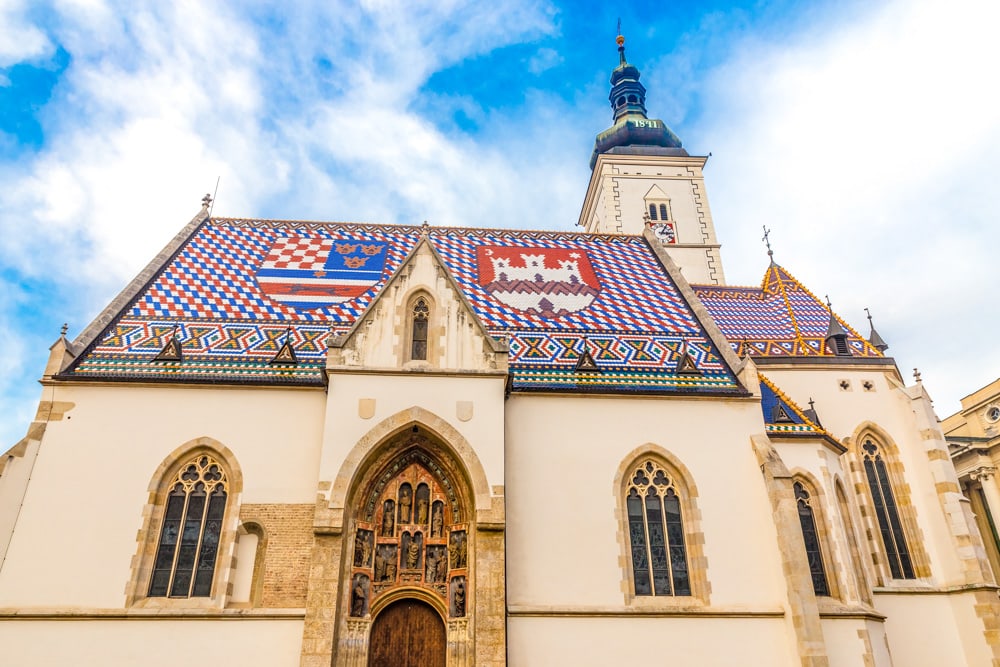
Zagreb Cathedral is an imposing and beautiful building to visit, with two spires. Also in the Upper town, one of the most beautiful churches to visit is St Mark’s, which has a very interesting tiled roof.
The city has lots of great museums, but the Museum of Broken Relationships is unique. Located in a baroque palace in the Upper Town, the museum houses items related to heartbreaks in love.
For fantastic architecture in a beautiful park, visit King Tomislav Square. Enjoy the trees and fountains, and admire the beautiful art pavilion. The historic buildings surrounding the square are gorgeous.
For lovers of the arts, the Croatian National Theatre is in Zagreb and is a fantastic place to watch some theatre, opera or ballet.
Tkalciceva, a lively street that runs through the Upper Town from Ban Jelacic Square in the Lower Town, is lined with many bars, pubs, and restaurants. It is a must-stroll when you visit Zagreb!
A great place to stay in the Lower Town is the Esplanade Zagreb. For food, there are loads of great places. Try Mali Medo, which serves great value local cuisine that you can wash down with beers brewed by them.
Zagreb is a lovely place to visit in the warmer months, when you can enjoy the outside seating throughout the city.
Suggested by Richard of RJ on Tour
Read More: One Day in Zagreb
Varazdin
The Baroque town of Varazdin is a must-visit in inland Croatia. It’s close enough to Zagreb that you can visit for the day: drive yourself if you have a car, or take the public bus.
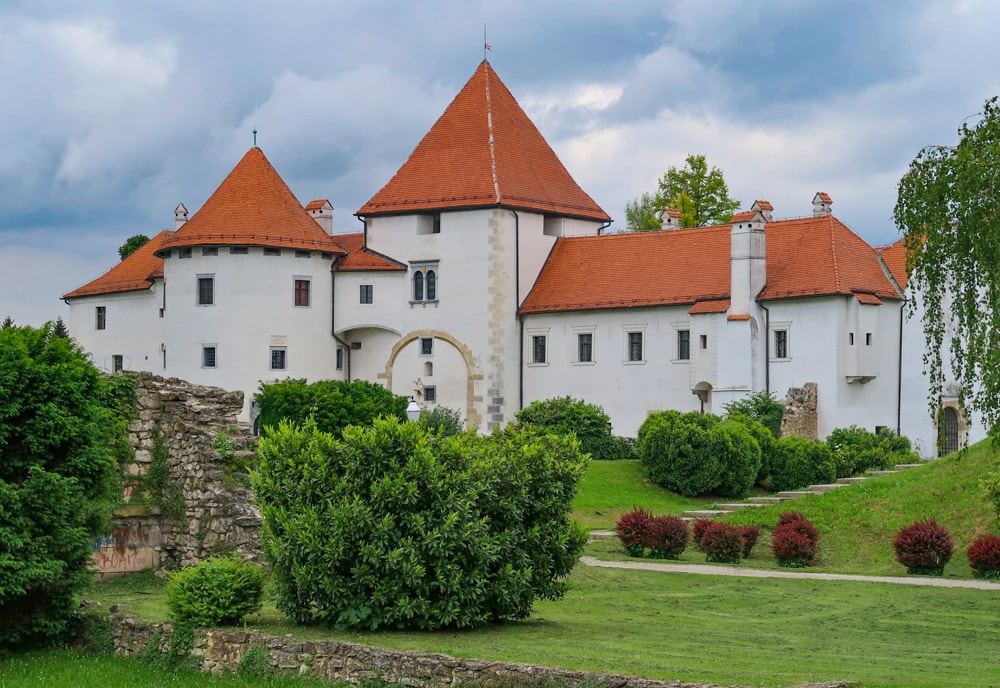
Nicknamed “Little Vienna,” Varazdin boasts beautiful architecture. The main square is impressive, with the Town Hall taking up one end and many beautiful palaces along the long sides.
Walk the pretty streets of the historic center, with its many churches and museums. The Varazdin Cathedral is on the main square, but also stop by the Franciscan Church and Monastery of Saint John the Baptist, and the Ursuline Church of the Birth of Christ.
Sermage Palace features a stunning Rococo facade. The structure houses art exhibits worth viewing, including a Madonna of Corn, depicting the Virgin dressed in a corn cob.
Stari Grad, Varazdin’s Old Town, is a stunning orange-roofed Baroque castle, complete with drawbridge and moat. Today it houses the Varazdin Museum.
A little ways out of the historic center, the Varazdin Cemetery is worth the walk. The tombstones and statuary are set amidst mature trees and plants, making for a very serene place to stroll.
The shoulder months of April-May and September-October are ideal for visiting Varazdin. You’ll find the weather pleasant and the crowds lower than in the summer. Christmas is another great time to visit, to experience the holiday lights and festivities.
Samobor
A charming little town in the Sava River Valley, Samobor makes for the perfect day trip from Zagreb. While it’s small, Samobor offers a number of things to do to keep you engaged through the day.
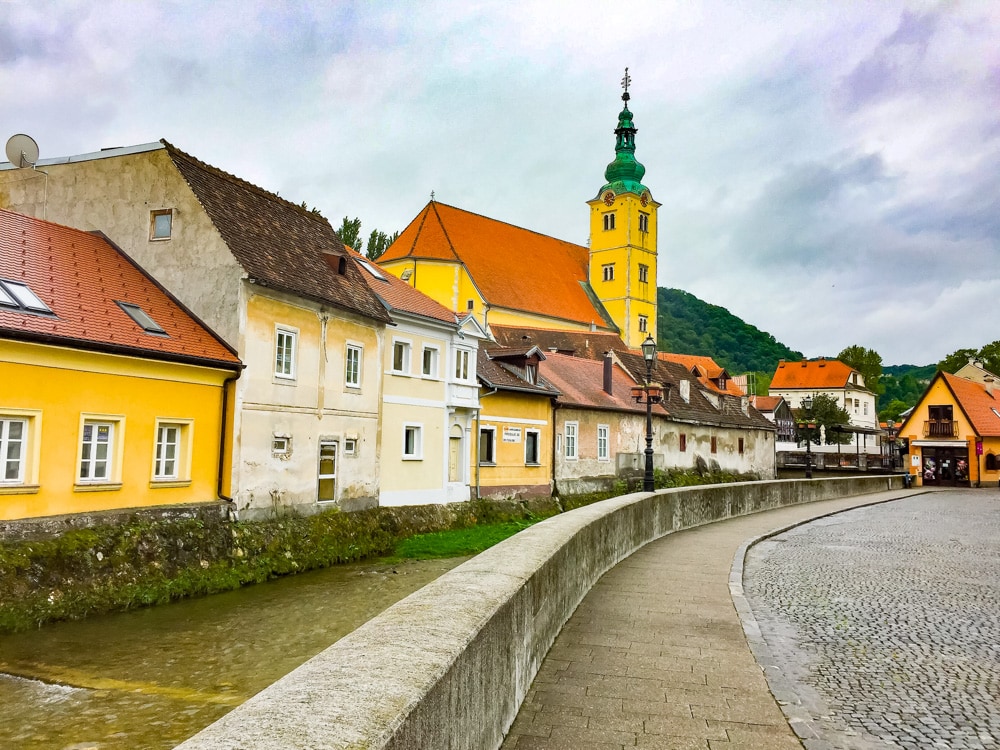
Walking through Samobor’s historic center is a joy. The bell tower of the Church of St. Anastasia rises gracefully above the historic buildings. There are small shops to browse, and you’ll see locals going about their day.
The main square is made for people-watching, so snag a seat at an outside table, order a drink, and enjoy watching the goings-on around you! Here you can have a slice of Samobor’s famous cream cake as well.
Hike to the ruins of the old castle, easily accessed from the historic center. The walk to the 13th-century castle takes just about 30 minutes each way, and the ruins make for great photos.
There are other trails you can walk into the surrounding hills, for views over the countryside. Grgos Cave, located just about 3 miles from the town center, has two impressive chambers with stalactites and stalagmites.
You can get to Samobor from Zagreb by public bus if you do not have a car. There are frequent departures in both directions, and the ride takes about 30 minutes each way.
Trakoscan Castle
Dating back to the 13th century, Trakoscan Castle is one of the most picturesque castles to visit in northern Croatia. If you have a car, you can easily drive yourself to the castle. If not, it’s best to visit on a guided tour.
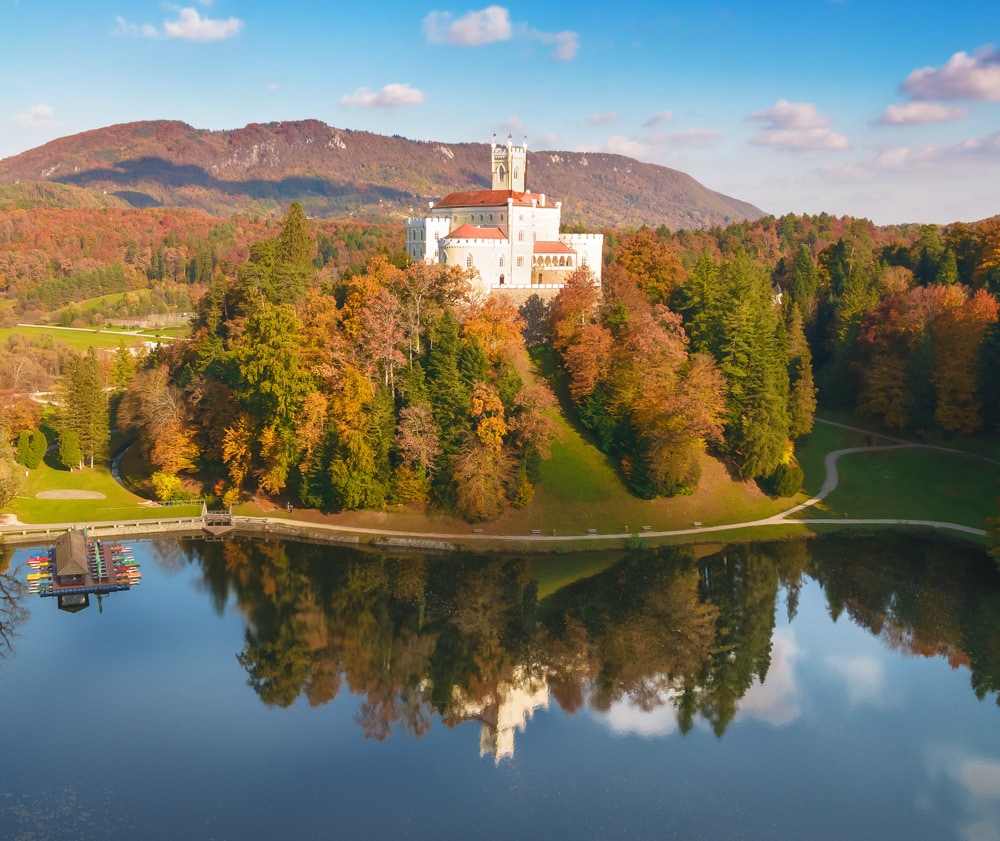
Originally built as a small defensive fort, Trakoscan Castle was turned into a residential estate in the mid-19th century. The surrounding park was also transformed into Romanticist gardens and grounds.
You can tour the multiple floors of the castle interior, as well as the kitchen, on a lower level. The interior is fully appointed, with period furnishings, paintings, and weaponry. From the upper levels, the views of the surrounding countryside are fantastic.
Walking the path around the lake outside is one of the best things to do here. Admire the many plants and trees. Snap photos of the castle reflected in the water. On a nice weather day, the walk, slightly under 4 miles, is wonderful.
You can also take a paddle boat out onto the lake and enjoy views of the castle from the water.
The uphill walk to the castle entrance can be challenging. There is a cafe at the bottom of the hill if you need a drink or a bite to eat. Note that photos are not allowed inside the castle.
Map of the Best Places to Visit in Croatia
Now that you’ve read about all the best places to visit in Croatia, discover how to put the best places together on a Croatia itinerary!
More Information for Your Croatia Trip!
If you are planning a trip to Croatia, check out our many in-depth guides!
- The Best Things to Do in Split
- The Must-Do Day Trips from Split
- Things to Do in Krka National Park
- The Best Day Trips from Zadar
- Visiting Trogir, Croatia
- The Best Things to Do in Zadar
- One Day in Zagreb Itinerary
- Day Trips from Zagreb You Must Do!
- Visiting Varazdin, Croatia
- The Best Things to Do in Rovinj
- The Best Coastal Towns in Croatia
Did you find this article informative? Pin it for later reference!
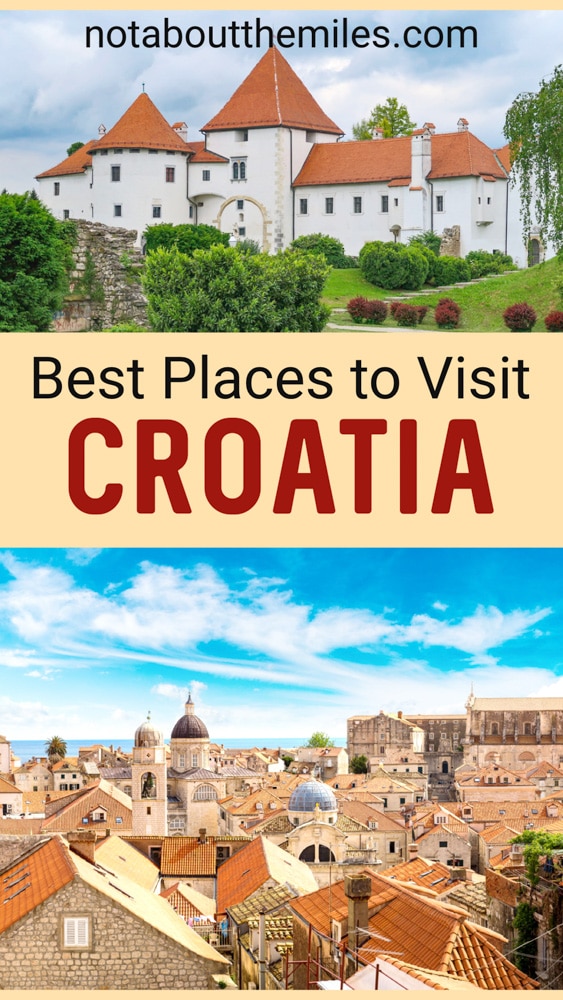

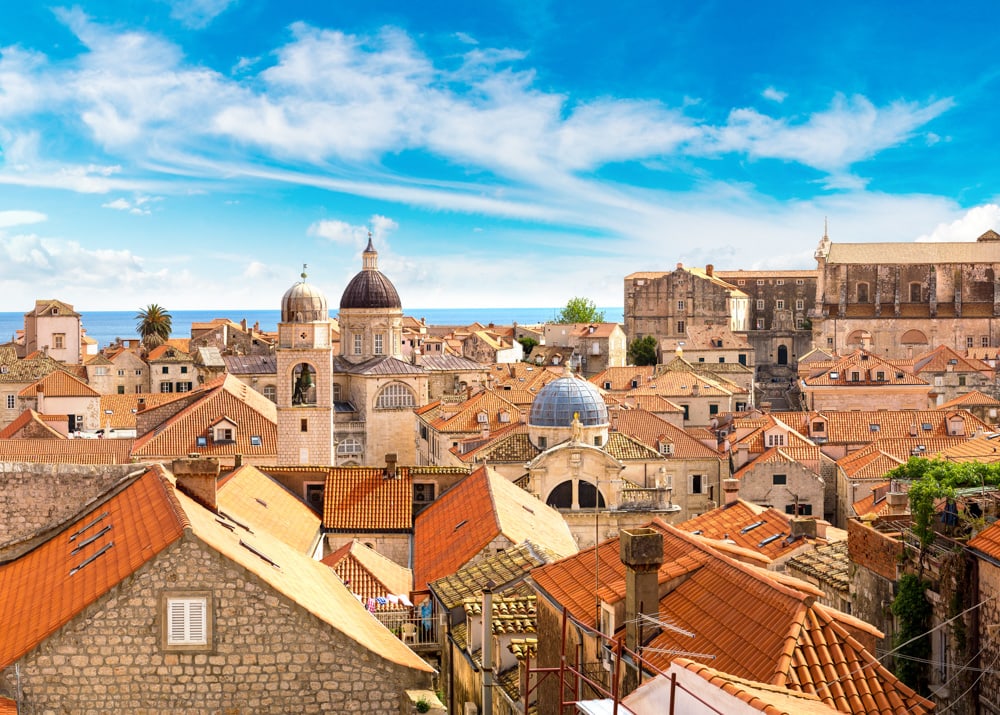
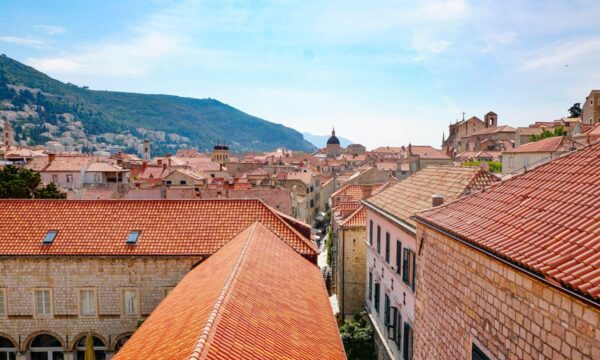
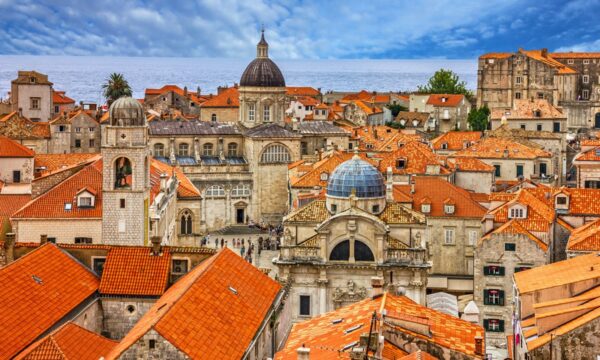
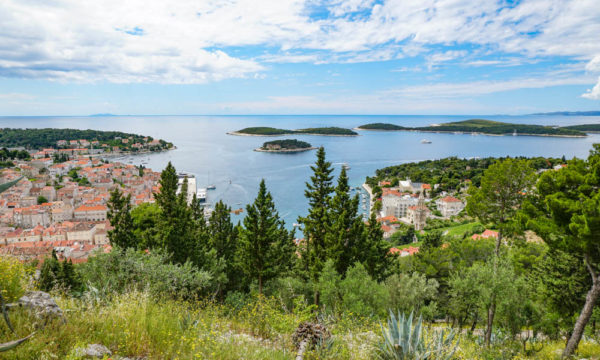
Thank you so much for cultivating your terrific blog! I am using your suggestions to help plan a European trip for summer 2023 that includes a week in Croatia! : )
That sounds wonderful. Croatia is lovely, and Dubrovnik and Plitvice Lakes are among our most favorite destinations!